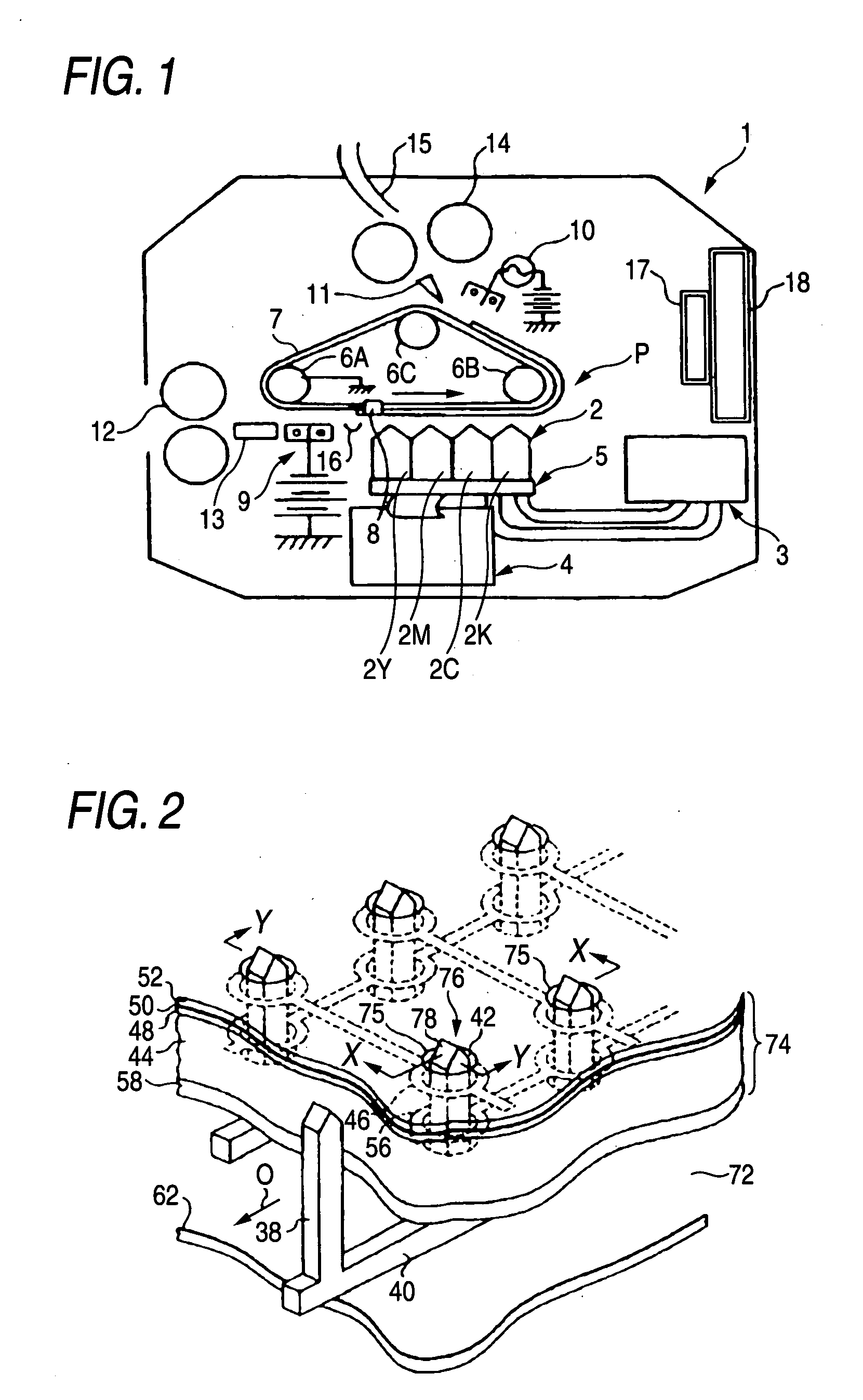Ink composition for inkjet recording and inkjet recording method
a technology of inkjet recording and composition, which is applied in the direction of inks, coatings, printing, etc., can solve the problems of inability to control the ejecting direction of ink droplets, high running cost and waste material treatment, and complicated system and expensive apparatus, etc., and achieve good effects
- Summary
- Abstract
- Description
- Claims
- Application Information
AI Technical Summary
Benefits of technology
Problems solved by technology
Method used
Image
Examples
example 1
[0148] A cyan pigment (10 g) and 20 g of Coating Agent Polymer (GP-1) were charged into a desktop kneader PBV-0.1 manufactured by Irie Shokai K. K. and mixed under heating for 2 hours by setting the heater temperature 100° C. Then, 30 g of the obtained mixture was coarsely ground by Trio Blender ma d by Trio Science K. K. and further finely ground by Model SYM-10 Sample Mill manufactured by Kyoritsu Riko K. K. Thereafter, 30 g of the resultant finely ground material was pre-dispersed together with 7.5 g of Dispersant (BZ-2), 75 g of Isoper G and glass heads having a diameter of about 3.0 mm in a paint shaker manufactued by Toyo Seiki Seisaku-Sho, Ltd. After removing glass heads, the pre-dispersion was dispersed (formed into particles) together with zirconia ceramic heads having a diameter of about 0.6 mm in Type KDL Dynomill manufactured by Shinmaru Enterprise K. K. at a rotation number of 2,000 rpm for 5 hours while keeping the inner temperature at 25° C. and for another 5 hours at...
examples 2 to 4
[0150] Inks (EC-2) to (EC-4) were prepared in the same manner by using thoroughly the same materials except that out of the materials used, Coating Agent (GP-1) was changed to (GP-2), (BP-1) and (BP-2), respectively.
PUM
 Login to View More
Login to View More Abstract
Description
Claims
Application Information
 Login to View More
Login to View More - R&D
- Intellectual Property
- Life Sciences
- Materials
- Tech Scout
- Unparalleled Data Quality
- Higher Quality Content
- 60% Fewer Hallucinations
Browse by: Latest US Patents, China's latest patents, Technical Efficacy Thesaurus, Application Domain, Technology Topic, Popular Technical Reports.
© 2025 PatSnap. All rights reserved.Legal|Privacy policy|Modern Slavery Act Transparency Statement|Sitemap|About US| Contact US: help@patsnap.com



